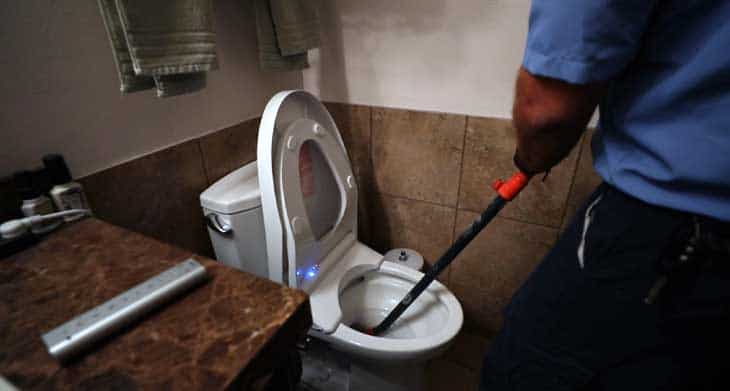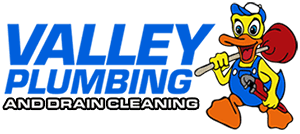
Your toilet is like a car: we want to make sure it is running properly so it can always do its job. There is nothing worse than having a dysfunctional toilet in a home. Not only is it inconvenient, but toilet issues in your home or commercial property can lead to significant problems down the road. Whether your concern is as minor as a toilet that continues to run, or as problematic as frequent clogging, make sure to get the issue taken care of right away. Our skilled team provides fast, effective solutions for our customers in Salt Lake County and Utah County.
Don't miss out on savings on your next service call with our exclusive online coupons and special offers.
Signs Your Toilet Needs Repair or Replacement
There are several telltale signs your toilet may need to be repaired or replaced. Common signs include:
- Cracks may start out as a hairline fracture and over time develop into something much more serious leading to water damage to your home or property. It's best to catch them when they are small to minimize the damage.
- When your toilet is constantly clogging and causing issues, it may mean your unit simply is not pushing enough water through the toilet causing annoying clogs.
- If an old toilet is no longer in good working condition, it may be the perfect time to buy a new one. Toilet seats, flappers, valves, and other parts may cost more altogether than purchasing a whole new unit.
- If your water bill has been steadily increasing, it may be time to purchase a new toilet. New toilets use less water than older ones and have a more forceful flush.
- If your toilet has rust buildup in the tank, it may start leaking. It is most likely time for a new toilet.
Don't ignore the signs. If you notice any of these signs, contact your trusted plumbing experts for an inspection. We will take a look, let you know what's causing the problem, and lay out your options so you can make the best decision for you and your home.
Care to see what other homeowners in the area are saying about us? Check out our recent customer feedback and reviews.
Easy Tips to Avoid Clogged Toilets
- Never, ever flush diapers or wipes.
- Avoid flushing big wads of toilet paper.
- Keep Q tips, hygienic products, and other materials out of the unit.
- Keep a small waste basket close by to avoid non-flushable items ending up in the toilet.
Preventing issues before they arise is always best. Make sure to schedule regular maintenance to ensure your toilet is running smoothly without disruption.
Frequently Asked Questions
Q: Why does the toilet keep running?
Most toilets that continuously run or run off and on have an issue with the internal tank parts. Here are a few items to check:
- The toilet flapper: The flapper is the rubber part at the bottom of the tank that seals the water in the tank. It should be replaced if it is old, corroded, misaligned, warped, or has any other reason why it isn’t sealing.
- The toilet Float Valve: This valve controls the tank's water level. If it is not shutting off all the way, it can make it so your toilet continues to run and overflow into the toilet bowl.
- Fill Tube can be misaligned: If this tube is damaged or not set properly, it can cause your water to continuously flow into the overflow pipe.
- Mineral Buildup: If you have hard water or a large deposit of minerals in your water, this can cause the fill valve, flapper, and other parts of your toilet to not function correctly.
- Broken handle or chain: If these components are broken or not functioning correctly, this can cause your toilet to continue to run. Make sure they are not stuck open or that the chain is not caught on anything inside the toilet.
- Adjust the Water Level: Sometimes it is as simple as adjusting the water level inside the tank so it shuts off at the correct level.
There can be other issues inside the actual construction of the toilet that can cause it to continuously run. You may need further help to diagnose these problems.
Q: Can I Flush “Flushable” Wipes Down the Toilet?
The question should be, should I flush “Flushable” wipes down the toilet? The answer is no. It is not worth the risk of backing up your drains or main sewer line. A lot of products will market themselves as flushable but ultimately won’t dissolve.
Q: What kind of low-flow toilets do you recommend?
Over the years low-flow toilets have had many amazing improvements to them. There are good, better, and best options when it comes to toilets. When choosing a toilet, I would recommend asking a plumber for their recommendations. Things to consider when you are looking for a new low-flow toilet:
- Flapper Size
- Manufacture
- Style
- Cost
Q: How do I replace my toilet flange?
Replacing a toilet flange isn’t something just anyone should do. This can be considered a moderately hard plumbing project. Here is what you need to complete the project:
- New Toilet Flange
- Wax Ring
- Adjustable Wrench
- Screwdriver
- Hacksaw
- Putty Knife
- Pipe Wrench
Here are the instructions:
- Turn off your water supply to the toilet
- Remove the toilet by disconnecting the water supply and unscrewing the two nuts from the floor bolts
- Inspect the Existing Flange to see if it needs to be replaced
- Remove Old Flange (use a screwdriver to remove the screws holding the flange in place). If you need to do much more than this, we recommend calling a plumber.
- Clean the Drain Pipe of any debris or wax from the wax ring.
- Install the new flange by placing it over the drain pipe and aligning the holes with the existing holes in the floor. Using screws, fasten the flange in place.
- Attach the toilet by placing a new wax ring in place and seating the toilet. Then tighten the nut on the floor bolts.
- Connect the water supply back to the toilet
- Test the toilet and make sure there are no leaks.
Q: How do I test if my toilet is leaking?
There are a couple of easy tests you can do to check for water leaks from your toilet:
- Visual inspection of all the different connections on your toilet. Look for drips or pools of water.
- You can listen to hear if water is running in your toilet.
- You can do a dye test on your toilet to see if water is leaking from the tank to the bowl.
- If you shut off all the other fixtures in the home, you can check your water meter to see if it is spinning.
